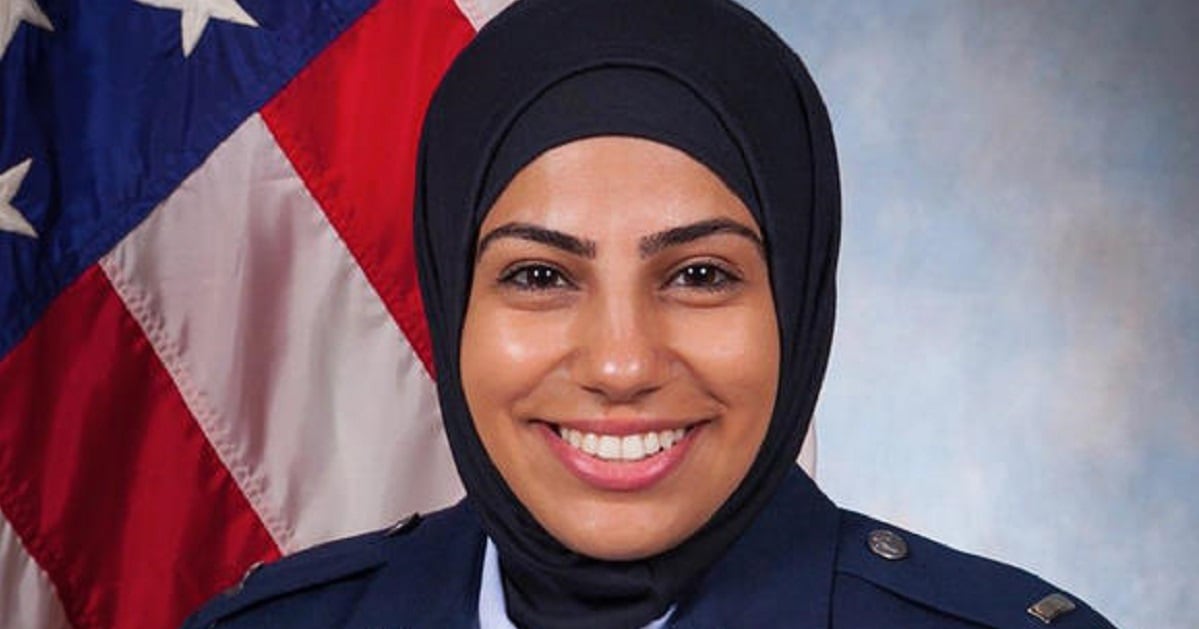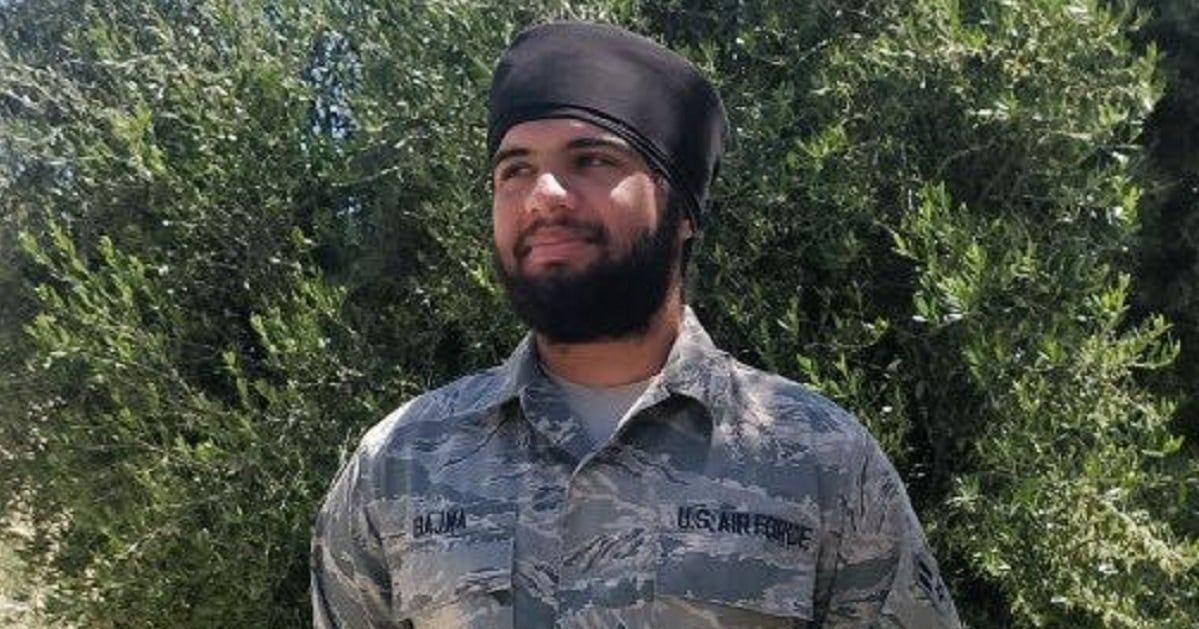The Air Force on Friday updated its regulations to formally allow airmen to ask for a waiver to wear religious apparel such as turbans or hijabs, or beards worn for religious reasons.
The update to AFI 36-2903, “Dress and personal appearance of Air Force personnel,” allows airmen to request a waiver to wear religious apparel, as long as they are “neat and conservative” and present a professional and well-groomed appearance.
The new religious accommodation rules also cover unshorn beards and unshorn hair — such as those worn by members of the Sikh faith — under-turbans or patkas, and other indoor or outdoor head coverings.
Such a request for an exemption to a military policy can only be denied, the AFI change said, if the policy “furthers a compelling government interest” and is the least restrictive way of furthering that interest.
The Air Force has granted several airmen permission to wear beards, turbans and the hijab for religious reasons in recent years.
Staff Sgt. Abdul Rahman Gaitan in 2018 became the first Muslim airman to receive a beard waiver for religious reasons. Capt. Maysaa Ouza, the first Air Force Judge Advocate General Corps officer to wear the hijab, was also featured in a short NBC documentary last year.
Airman 1st Class Harpreetinder Singh Bajwa in June 2019 became the first active-duty Sikh airman allowed to wear a turban, beard and long hair, which Sikhs tie in a bun and then cover with the turban.
And at least two airmen who follow the Norse Heathen, or pagan, faiths have been granted permission to wear a beard.
The Sikh Coalition, the largest Sikh civil rights organization in the United States which has helped more than 20 Sikh Americans serve in the military, applauded the changes. The Sikh Coalition represents Airman 1st Class Gurchetan Singh, who is the first Sikh American to secure a religious accommodation to serve in the Air National Guard.
“I am grateful to hear of this policy change, because it codifies in writing what I already know: The U.S. Air Force values the service and contribution of religious minorities like me,” Singh said in a statement provided by the group. “Accommodations, after all, aren’t about special treatment — they are about ensuring that religiously observant Sikhs and others don’t have to choose between staying true to our faith and serving our country.”
The updated regulation said beards must be no longer than two inches when measured from the bottom of the chin, and must be rolled and/or tied when longer than two inches.
RELATED

The hijab, or head scarf, can be made of a subdued material in a color that resembles the airman’s assigned uniform, such as black, brown, green, tan or navy blue, the regulation said. It must be free of designs or markings, except an airman wearing the Airman Battle Uniform or Operational Camouflage Pattern uniform can wear a matching camouflage hijab.
Turbans and under-turbans have similar color and material requirements as the hijab. An airman’s rank will be displayed on the turban or under-turban when worn in circumstances where military headgear is customarily worn, and removed in circumstances where military headgear is not typically worn, such as indoors or in no-hat or no-salute areas.
Sample accommodation request memos included with the regulation said that the Air Force can order an airman to immediately shave or remove their turban or hijab if they need to be ready to wear a gas mask during an emergency.
A sample memo also said that an airman wearing a turban could be ordered to remove it if he goes within 25 feet of an operating aircraft. And if that airman is assigned to a unit that wears a beret of a particular color, the unit commander can order him to wear a turban of the same color.
A religious accommodation request must include information including the airman’s job, what the airman is asking for and the religious reason for the request, and a comment on the sincerity of the request. It must also include a photo or description of the head covering, religious-affiliated item, grooming standard or personal appearance that is being requested.
The wing chaplain or equivalent will then assign a chaplain to interview the requesting airman about what is motivating him or her to ask for it. The interviewing chaplain will then send the wing chaplain a memo on whether the airman has a sincerely-held belief, whether the accommodation is related to that belief, and how the Air Force policy places a burden on that belief.
The airman’s unit commander would then decide whether to endorse the request. But if the unit commander is going to say no, the regulation said, it must be an unusual situation and “based on real (not theoretical) compelling government interest,” such as safety.
“Requests should normally be recommended for approval unless approval would have an adverse impact on military readiness, unit cohesion, standards or discipline,” the regulation said. “When requests are precluded by military necessity, commanders and supervisors should seek reasonable alternatives.”
Wing commanders or other leaders at major commands, numbered air forces or other organizations will then approve or deny such a request. But if they deny a religious accommodation request, it will go up to the Air Force headquarters’ manpower, personnel and services directorate, Air Force reserve or the Air National Guard for a final review and decision.
The Reserve or Guard, before finally denying a request, will first consult with the Air Force personnel directorate and obtain a legal review from the Air Force.
Stephen Losey is the air warfare reporter for Defense News. He previously covered leadership and personnel issues at Air Force Times, and the Pentagon, special operations and air warfare at Military.com. He has traveled to the Middle East to cover U.S. Air Force operations.



